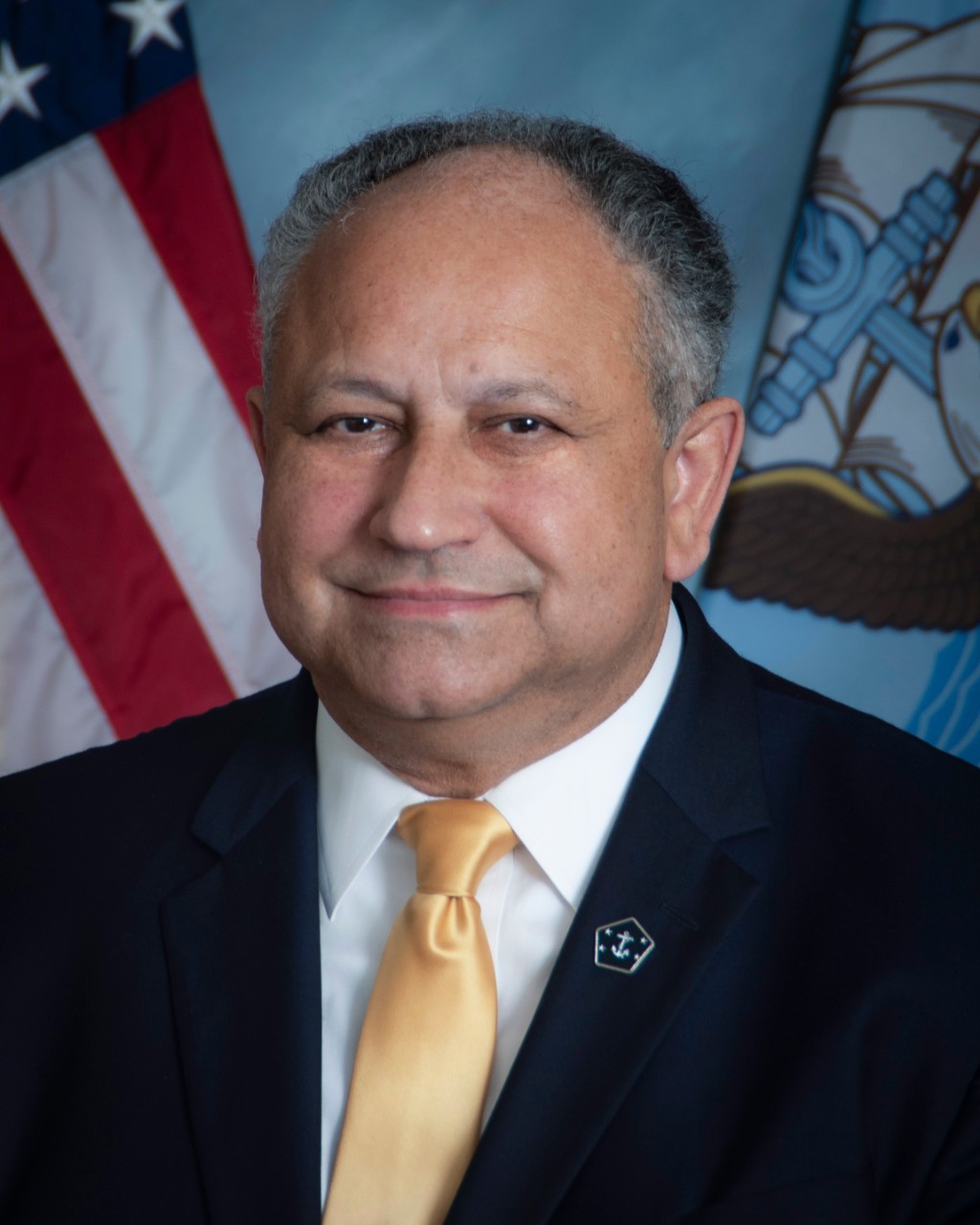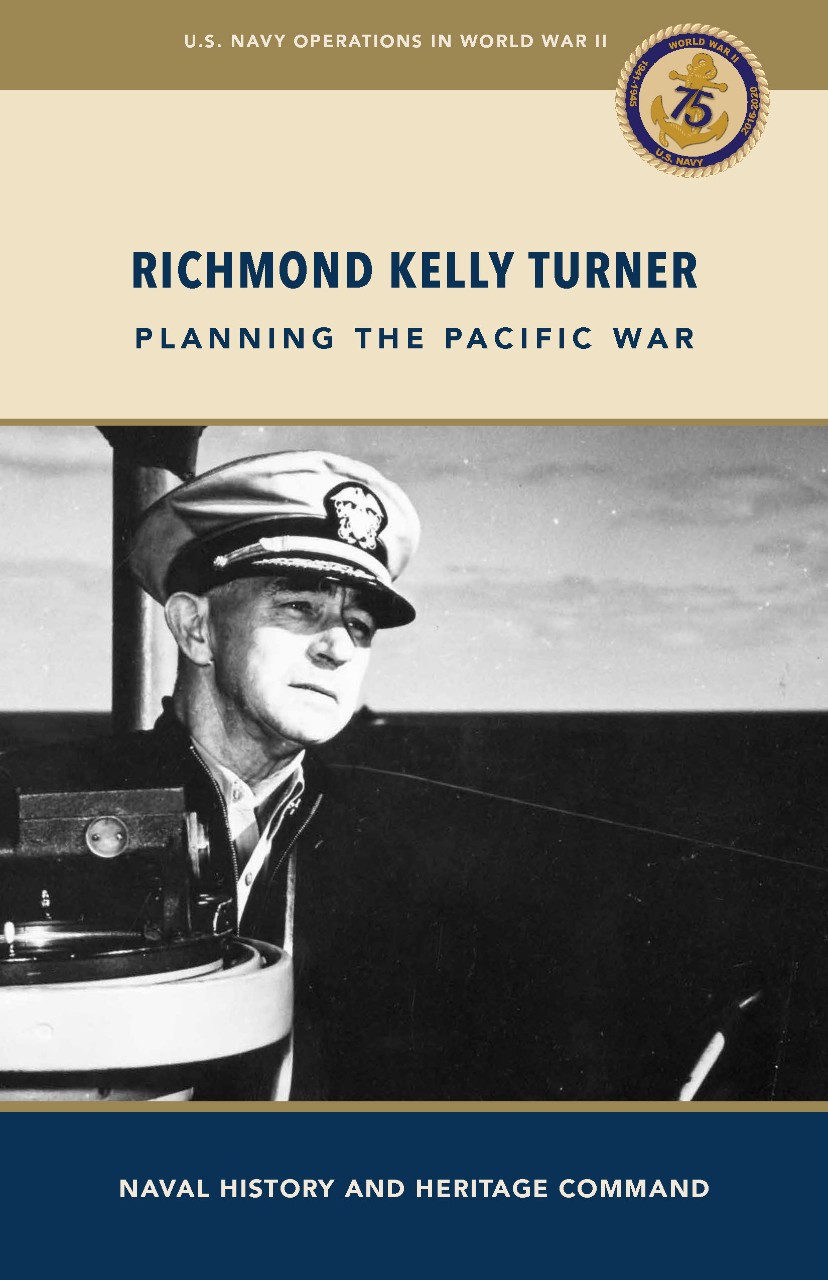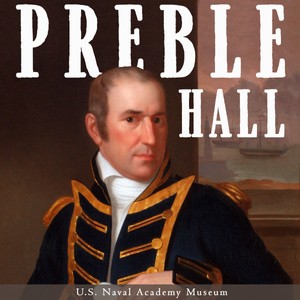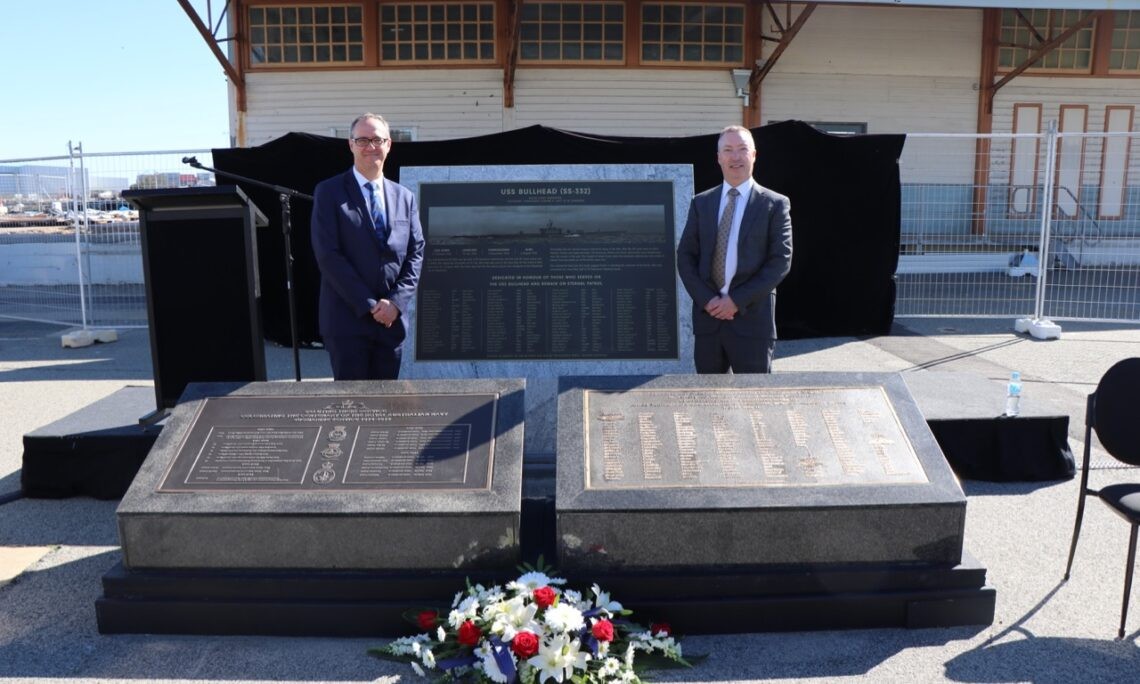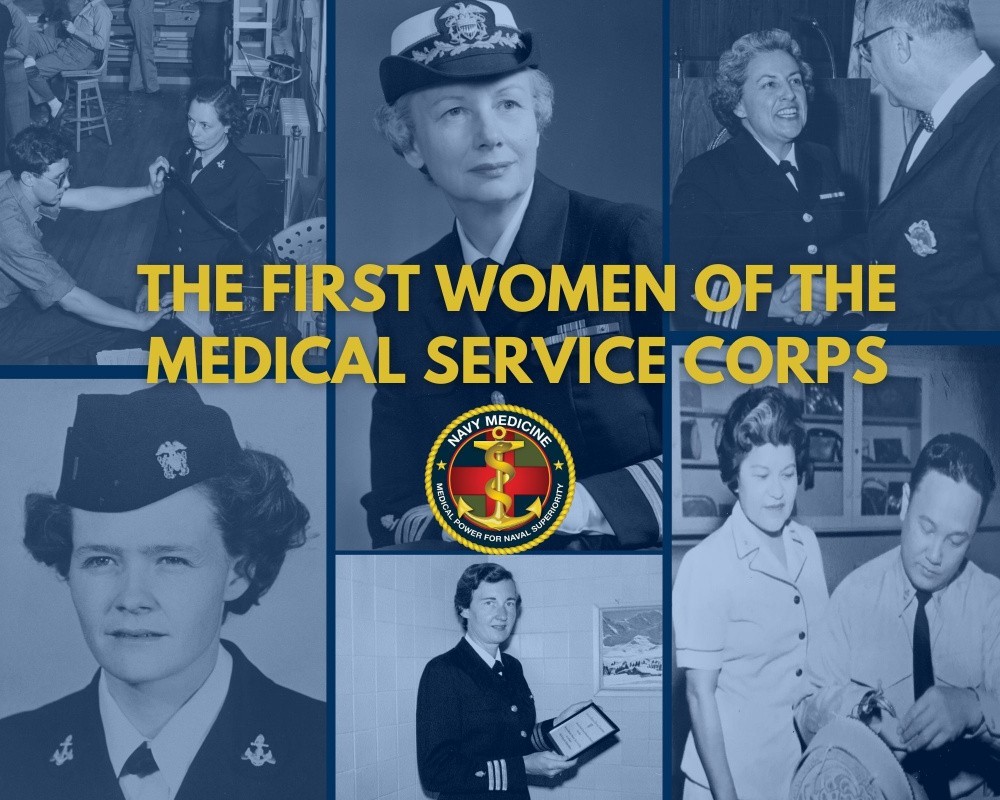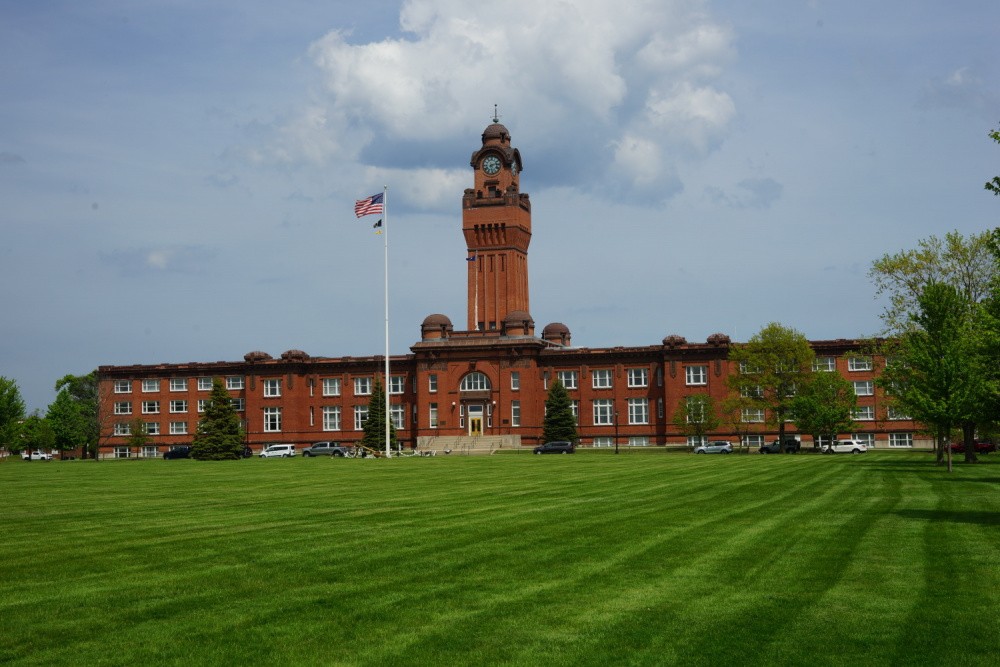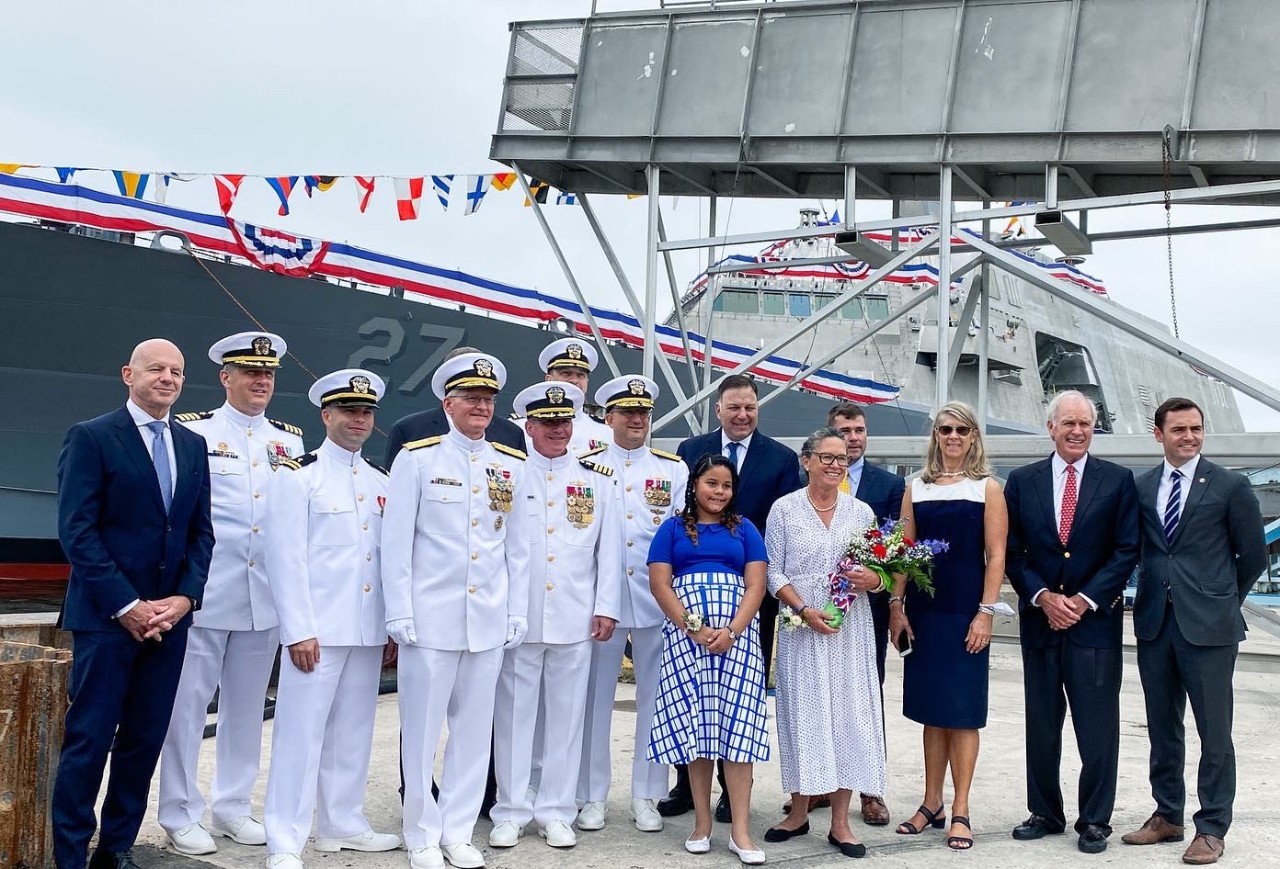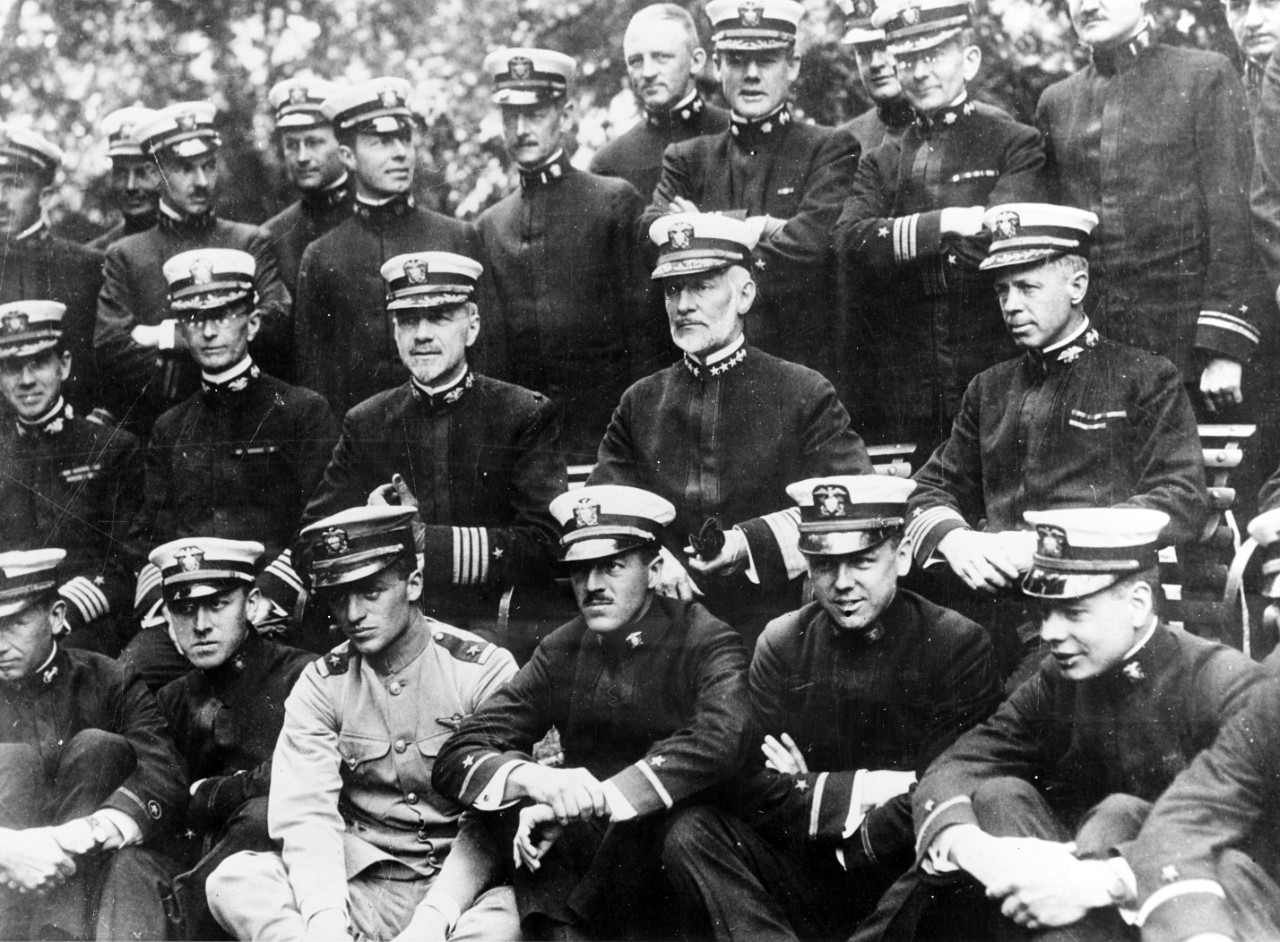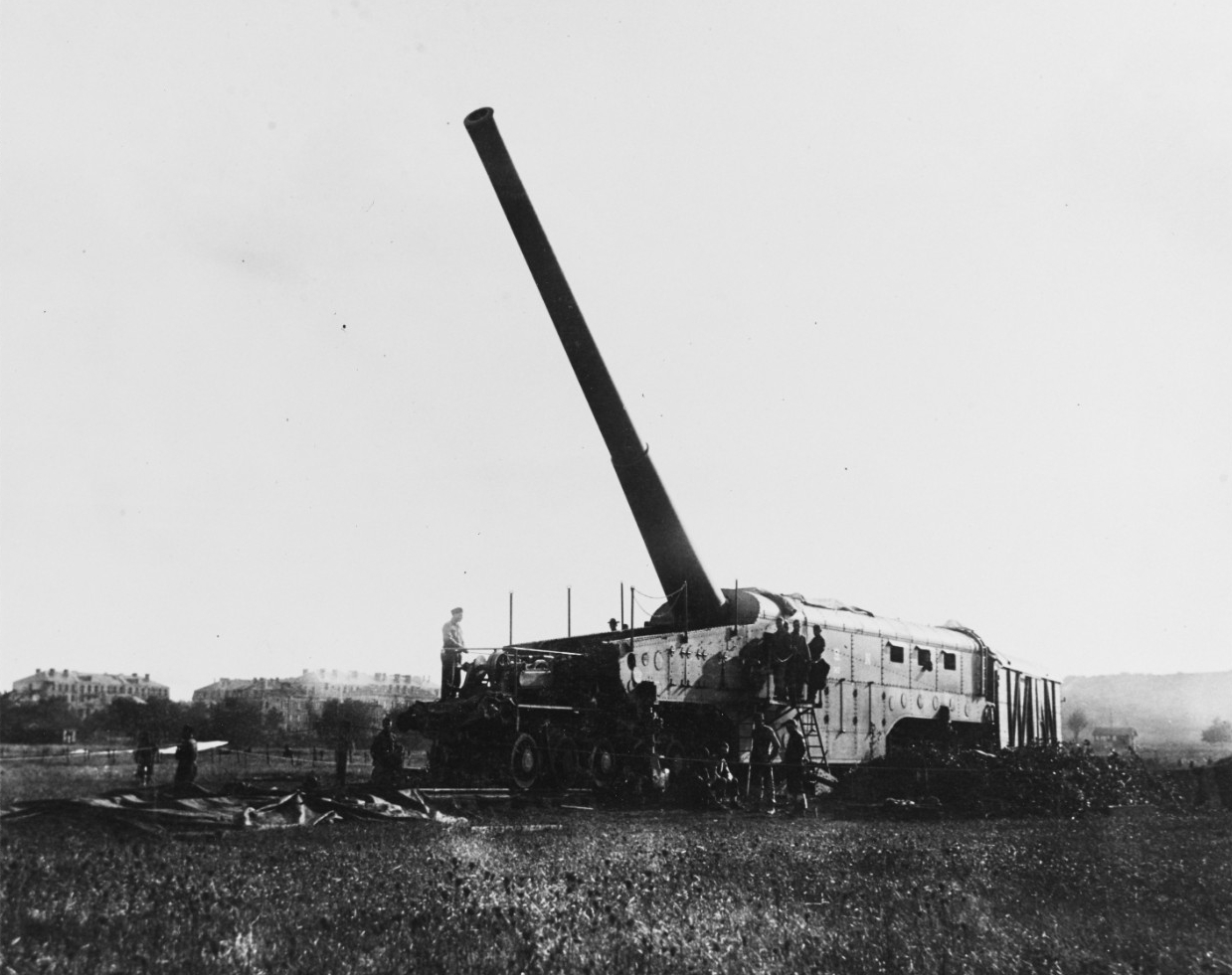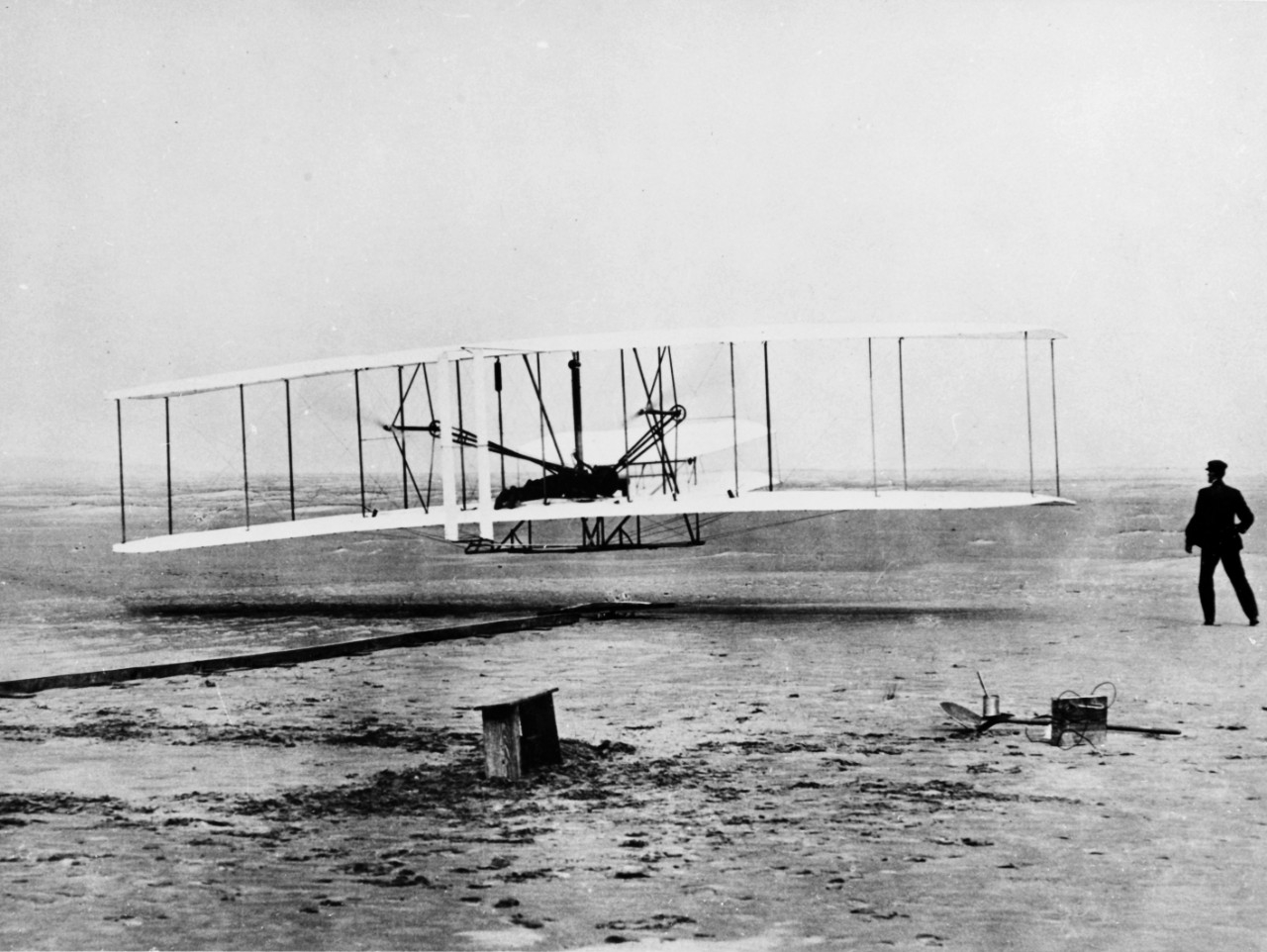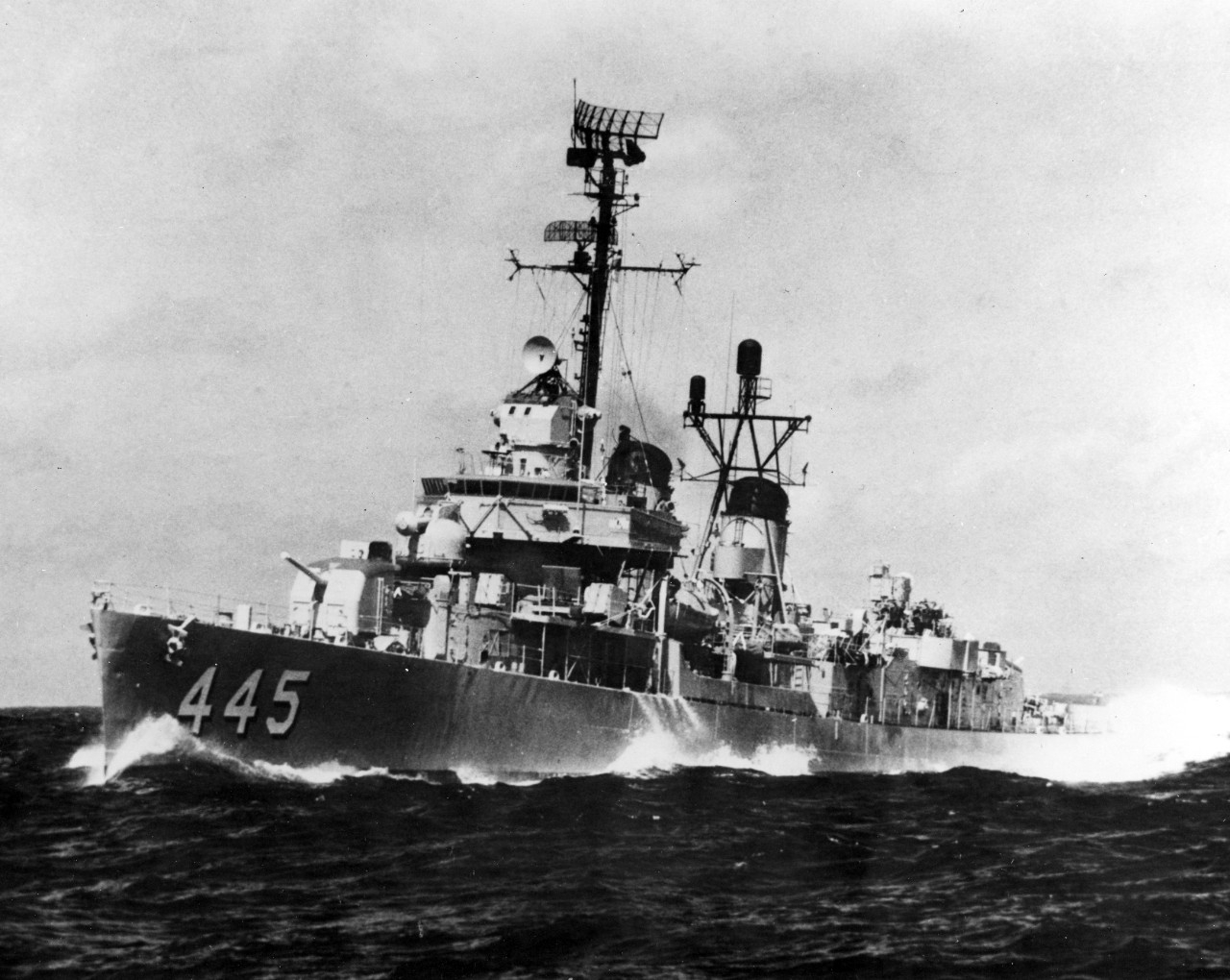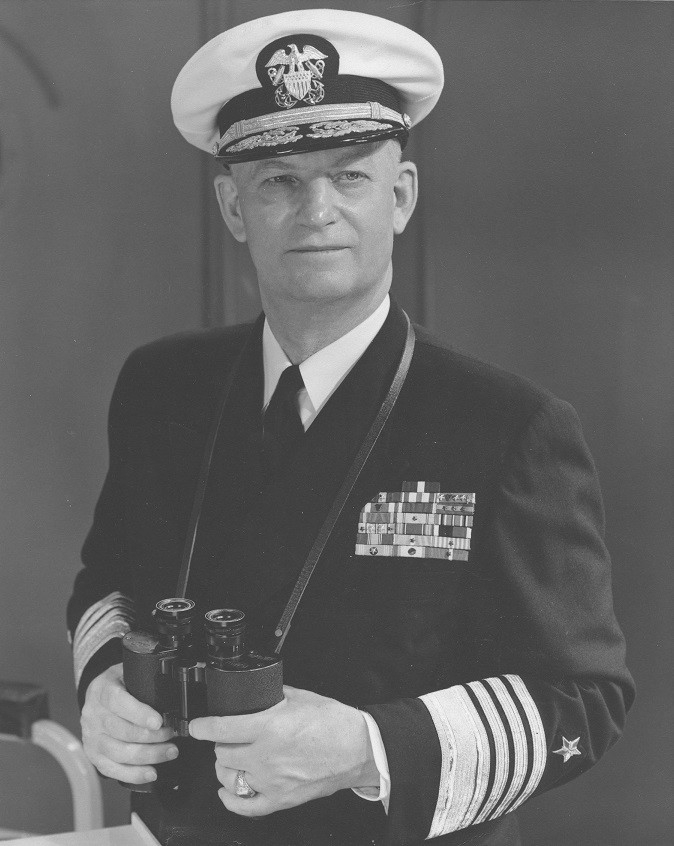Compiled by Brent Hunt, Naval History and Heritage Command’s Communication and Outreach Division
Carlos Del Toro Sworn in as 78th SECNAV
On Aug. 10, Secretary of the Navy Carlos Del Toro was sworn in as the 78th Secretary of the Navy during a ceremony at the Marine Corps Memorial in Arlington, VA. “I am extremely proud, but humbled to return to the Department of the Navy,” Del Toro said. “I come back as someone who loves the Navy—who spent 26 years in uniform and another 17 striving to make sure you had the capabilities you needed to fulfill your mission effectively and safely. Serving you as your 78th Secretary of the Navy is a high honor that carries grave responsibilities to which I will dedicate all my skill and devotion.” Born in Havana, Cuba, he graduated from the U.S. Naval Academy in 1983 as a surface warfare officer. Over the course of his naval career, he served in multiple critical appointments and numerous tours of duty at sea, including as first commanding officer of USS Bulkeley and special assistant to the Director and Deputy Director of the Office of Management and Budget in the Executive Office of the President. For more, read the U.S. Navy press release.
Richmond Kelly Turner: Planning the Pacific War
The significance of the individual agency is often lost in the telling of large-scale historical events. Then-Capt. Richmond Kelly Turner was one of those rare individuals to stand out in the historical narrative of World War II. He played a pivotal role in planning and executing the war in the Pacific. Following the outbreak of war in Europe in 1939, the U.S. Joint Planning Committee reassessed its plans as a precaution against the looming possibility of a two-ocean war with multiple opponents. The outdated War Plan Orange was withdrawn in 1939 and replaced by the Rainbow Plan Series. As the director of the War Plans Division for the Chief of Naval Operations (OPNAV) from 1940 to 1941, Turner was instrumental in developing a joint estimate to guide planning for a two-ocean war. The option ultimately endorsed by the Chief of Naval Operations later became the basis for joint strategy and planning after the United States entered the war in the wake of the attack on Pearl Harbor. The pamphlet, recently published to NHHC’s website—Richmond Kelly Turner: Planning the Pacific War—identifies ten lessons learned for effective planning from the experiences of Turner. Rear Adm. Tom Williams, the current director of Plans, Policy and Integration, Office of the Chief of Naval Operations, contributed the foreword to this publication. Check it out today. It may be downloaded for free as a 508-compliant PDF.
Preble Hall Podcast
In a recent naval history podcast from Preble Hall, Jason Smith talks about his work studying naval science, particularly the science of hydrography, in the 19th century American Navy. He also talks about how to properly contextualize people like Matthew Fontaine Maury, the father of oceanography, who also held pro-slavery views and supported the Confederacy. The Preble Hall podcast, conducted by personnel at the U.S. Naval Academy Museum in Annapolis, MD, interviews historians, practitioners, military personnel, and other experts on a variety of naval history topics from ancient history to more current events.
Memorial to 84 WWII U.S. Sailors Lost Aboard USS Bullhead Unveiled in Australia
A significant memorial in Fremantle, Western Australia—a vital homeport to American, British, and Dutch submarines in the Pacific—was recently unveiled. It honors the 84 crewmembers of the last U.S. Navy submarine lost in World War II, USS Bullhead. On Aug. 6, 1945, the boat reported she had safely passed through the Lombok Strait and was in her patrol area, but no further word was ever heard from her. Postwar analysis revealed that a Japanese army plane depth-charged a submarine off the Bali coast near the northern mouth of the Lombok Strait on Aug. 6. “Lives aboard USS Bullhead were lost defending Australia,” said American Consul-General David Gainer. “This memorial is a powerful symbol of their courage and the unbreakable alliance between our two countries.” The memorial sits behind two memorials that were already in place—one to the Submarine Service of Australia and the other a listing of all the submarines that served in Fremantle during the Pacific War. Fremantle was second only to Pearl Harbor as an Allied submarine base during the war. For more, read the article. For more on the submarine force, visit NHHC’s website.
A Look Back at the First Women in the Medical Service Corps
On Sept. 20, 1948, the U.S. Navy selected the first 21 women for active duty in the Medical Service Corps under the Women’s Armed Services Integration Act. Each of them, former WAVES (Women Accepted for Volunteer Enlisted Service), had served in various capacities during World War II. One of the first of the 21 women was aviation physiologist Mary Keener, who originally entered the Navy in 1942 and studied communications at Smith College in Northampton, MA. In her first assignment, Keener worked in the “Secret Code” room for Chief of Naval Operations Adm. Ernest King. Over the summer of 1944, she was offered an opportunity to go to Pensacola, FL, where the Hospital Corps was standing up a new field for WAVES officers—aviation physiology. She jumped at the opportunity and ended up staying there for the remainder of the war, giving lectures on the effects of hypoxia and on the dangers of high altitude. In 1948, after briefly leaving the Navy, she helped initiate programs for high-altitude training and launched the first ejection seat training for jet aircraft. Over the next two decades, Keener had a front row seat to new developments in aviation and aerospace medicine. Before she retired in the late 1960s, she was the first female to be awarded naval aviation wings and was designated “Aviation Physiologist No. 1.” For more on the first women in the Medical Service Corps, read the article. For more on women in the U.S. Navy, visit NHHC’s website.
Naval Station Great Lakes: “The Quarter Deck of the Navy”
In 1911, an improbable venture began when the Navy, with the assistance of local business, civic, and political leaders in nearby Chicago, established Naval Training Station Great Lakes. What made the project improbable was the fact that the naval training station was located far from the Pacific and Atlantic oceans, and from the Gulf of Mexico. Before Great Lakes was established, the Navy operated three naval training stations—one at Newport, RI, which covered the North Atlantic section of the country, another at Port Royal, SC, representing the South Atlantic and Gulf coasts, and a third at Yerba Buena, CA, which provided for the recruiting needs of the Pacific coast. That changed after the Spanish-American War, when the Navy discovered naval militiamen from the Midwest conducted themselves with “notable courage and distinction.” Opening its doors July 1, 1911, the first recruit reported to the installation two days later. By the end of the month, 190 men were onboard. At the onset of World War I, the installation experienced its first massive expansion, during which some 87,000 recruits were transformed into Sailors and another 22,000 received technical training. During World War II, the installation transformed one million recruits into Sailors. For more on the history of Naval Training Station Great Lakes, read the article.
Navy Christens, Launches Nantucket
The U.S. Navy recently christened the future littoral combat ship USS Nantucket during a ceremony at the Fincantieri Marinette Marine Shipyard in Wisconsin. Once the ship is commissioned, she will be homeported in Mayport, FL. “The future USS Nantucket will truly honor the rich heritage of the people of Nantucket and the maritime legacy that the island represents,” said C. Elizabeth Gibson, Nantucket’s town manager. “Having dedicated much of my life to living in and serving the town of Nantucket, I know just how proud our community is of LCS-27 bearing our island’s name and knowing that the ship and its crew will fulfill critical missions on behalf of the U.S. Navy for years to come.” The ship is the third to bear the name of the island south of Cape Cod, MA, which was a whaling hub during the 19th century. The first Nantucket was commissioned in February 1863 and served on the South Atlantic Blockading Squadron during the Civil War. The second Nantucket was a wooden light ship built in 1907 for the Lighthouse Service that was transferred to the Navy in 1917. During World War I, she warned ships away from the Nantucket Shoals and aided in guarding nearby waters against U-boats. For more, read the article.
SECNAV Establishes History Section
On Aug. 18, 1918, 103 years ago, the Secretary of the Navy established a history section under the Chief of Naval Operations and directed that historical material on World War I eventually be collected there. The directive emphasized that no hampering or interference with the war effort should be permitted to occur in obtaining information. Recognition of the importance of the historical aspects of naval operations and the growing volume of war records resulted in the appointment of retired Rear Adm. William W. Kimball as head of the new section. In compliance with the Secretary’s order, Adm. William Sims created a historical section in the staff of the U.S. Naval Forces operating in European waters. In dispatches and correspondence, Sims stressed the importance of adding trained historians to his staff. However, before properly qualified officers could be selected for the historical project, Armistice was declared. For more, read Office of Naval Records and Library 1882–1945 at NHHC’s website.
First Naval Railway Gun Mounted
On Aug. 18, 1918, the first naval railway gun, a 14-inch, 50 caliber, Mark IV Navy gun mounted on a railway carriage, became operational in St. Nazaire, France, during World War I. There were five operational batteries—one gun each—that would go on to fire 782 14-inch rounds on 25 occasions at strategic targets far behind enemy lines. The weapon was developed in response to Germany’s long-range artillery that could hit targets very accurately. Rear Adm. Ralph Earle, who was chief of the U.S. Navy Bureau of Ordnance, led in the development of the rail guns that were placed on a special railroad car. The guns were assembled on the Washington Navy Yard. For more, read H-Gram 021-3.
National Aviation Day
In observance of the anniversary of Orville Wright’s birthday, President Franklin D. Roosevelt established in 1939 that Aug. 19 would be National Aviation Day. The purpose of Roosevelt’s proclamation was to encourage U.S. citizens to observe the day with activities that promoted interest in aviation. NHHC has plenty of information on naval aviation, including paintings, imagery, and the world’s largest naval aviation museum—National Naval Aviation Museum in Pensacola, FL. Check out all of NHHC’s resources and make it a great National Aviation Day!
Webpage of the Week
This week’s Webpage of the Week is new to NHHC’s Notable Ships section. USS Fletcher was commissioned on June 30, 1942, with Lt. Cmdr. W. M. Cole as commanding officer. The ship was named to honor Adm. Frank Friday Fletcher, who had received the Medal of Honor for his leadership during the Mexican-American War. The ship was the first of the Fletcher-class destroyers that were built during World War II. About four months after Fletcher joined the fleet, she arrived at Noumea, New Caledonia, and began escort and patrol duty in the waters of Guadalcanal, bombarding Lunga Point on Oct. 30. On Nov. 9, she provided cover for the landings of reinforcements on the embattled island, and three days later drove off a heavy enemy aerial attack, splashing several Japanese aircraft during a crucial phase of the Guadalcanal campaign. On Nov. 13, she joined other American ships in sinking two enemy destroyers and damaging battleship Hiei, which was later sent below the waves by naval aviation. Fletcher, a veteran of three wars, would go on to receive 15 battle stars for her World War II service. She earned an additional five for the Korean War, and seven more for her service during the Vietnam War. Check this page out today. It contains a short history, suggested reading, interviews with crewmembers, and selected imagery.
Today in Naval History
On Aug. 17, 1959, Adm. Arleigh A. Burke was reappointed as Chief of Naval Operations for his third two-year term, serving the longest as the Navy’s top officer. During his watch, an impressive array of “firsts” occurred. The world’s first guided-missile ship—modernized USS Boston, with her Terrier antiaircraft system—joined the fleet in 1956; the first guided-missile frigates were commissioned; the first nuclear-powered surface ships—USS Enterprise, USS Long Beach, and USS Bainbridge—were launched; and the first helicopter carrier designed for vertical envelopment amphibious assault was commissioned. In addition, major progress was made in a variety of shipboard and air-launched guided missiles, sonar, and antisubmarine warfare weapons. Modernization of the Navy was certainly not Burke’s only contribution. He believed the Navy “is people,” which he constantly emphasized during his time as CNO. He opened additional avenues of communication so that, from flag officer to seamen, all “would know, not only what they were doing, but why.” He retired from the Navy on Aug. 1, 1961, and passed away on New Year’s Day in 1996. He is buried at the U.S. Naval Academy cemetery in Annapolis, MD.

